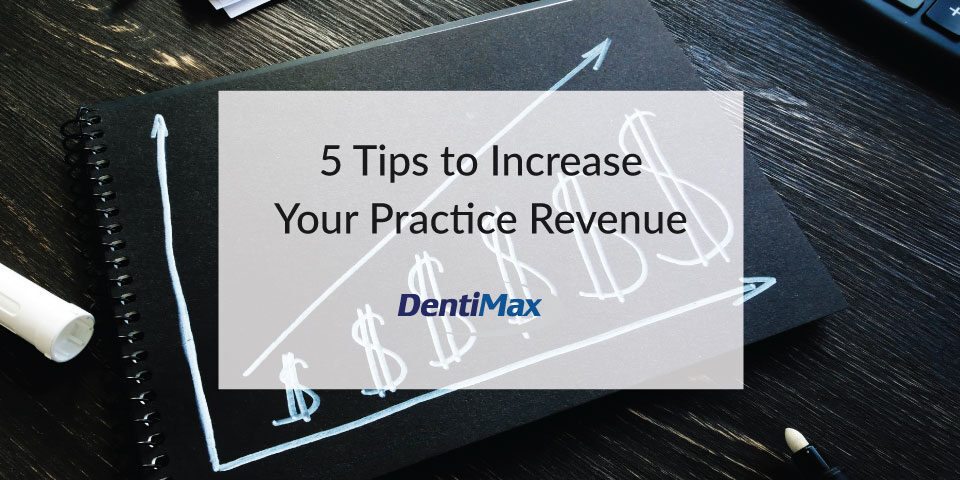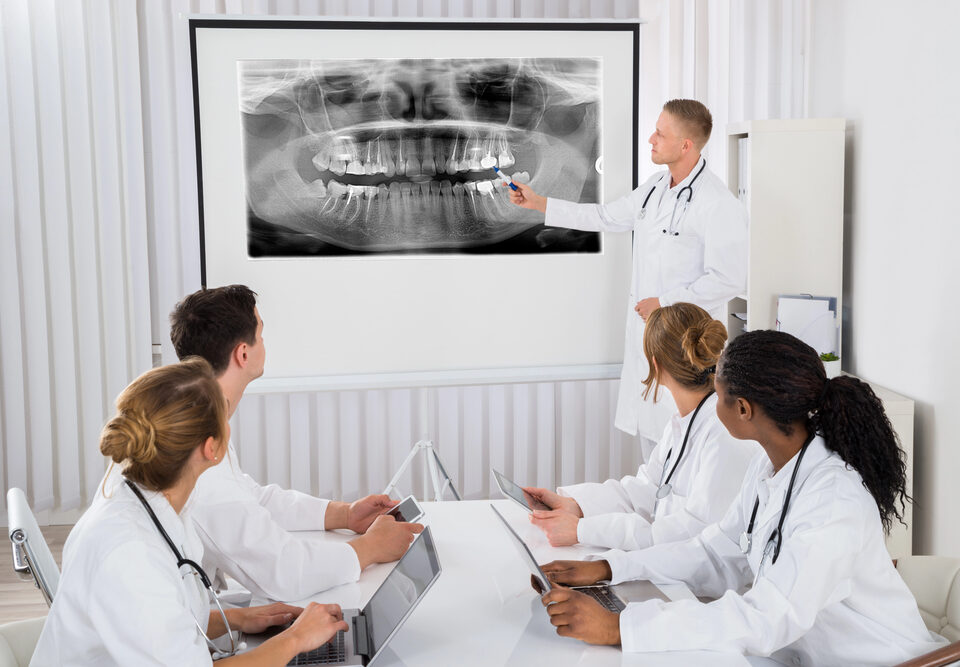Let’s face it, every dental office could use a little more revenue. There are a million tiny things in a dental office that affect the bottom line. But sometimes you just need to focus on a few items that can make a larger impact on the health of your practice. Here are 5 ways you can increase your practice revenue.
Keeping your schedule full
What is your time worth?
Hours Worked in a full week
Total Production from a full week
Hourly Valuee
One of my favorite quotes is, "Time is the one thing I can’t get back and can’t give back to you," by Bill Maris. It’s not my favorite because it’s a beautiful or inspiring message, but because it is a slap you in the face truth. Time is finite, and once that empty, unfilled, lonely hour on your schedule goes by without a patient in it, you have lost an ho Knowing the value of your time is hugely important. If you don’t, you may not value the time it costs you to be at work instead of at home. If you are not being productive with that time, then why are you giving it away? Opportunities. You give that hour away for an opportunity to make money for your family. In dentistry, if you are not seeing a patient, are you making money? If you can answer yes, excellent job! If you are the dentist, the answer is most likely no. It’s better to have a schedule full of patients that have a no charge visit or a low value procedure, than have an empty schedule. This is because you are going to see them eventually. So rather than let time slots go unfilled, move patients up on the schedule or book the "free" appointments to stay productive. The cornerstones of any dental office are new patients and hygiene. These two facets of your business are the most important because it covers both types of patients you need. New patients bring in more new patients. Yes, existing patients refer patients also, but existing patients usually only refer other patients when your office is new and exciting to them. Once that initial impression fades away, they stop thinking about inviting their friends and family to you, or they have already done it. The best time to get referrals from someone is while the impression is fresh. When you have a new patient come in, you have a new opportunity to really shine. Have the best customer service you can, and really wow them with how on top of things you are. It doesn’t matter what happened the day prior, you can always start new with a new patient. This of course does not mean you should neglect your existing patients, which is where hygiene factors in. There are two channels you can engage to get new patients, active and passive. As I mentioned above, new patients refer new patients! An example of active engagement is asking your new patient if they have family they would like to get scheduled with your practice. See if they have friends or co-workers that they can talk to about your office. If they had an unpleasant experience, however, they won’t want to refer their friends to you. An example of passive engagement is to have them leave a review on a public site, such as Google, Yelp, Facebook, etc. According to Statista, 86.6 percent of the worldwide search market uses google search when they need to search for something (in theory, this applies to finding a new dentist). Also, 68 percent of purchasers trust reviews over friends and family, according to Swell. It makes sense that a business with more, and frequent reviews is going to show up toward the top of the Google search, which means that listing is more likely to win new customer business. Review systems that integrate with your practice management software can really help automate this task. A few examples of systems that work with DentiMax are of course the DentiMax Communicator, Swell, and Weave. You can also set up some social media channels with fun videos of your team and your office, pictures of before and after results if your practice focuses on cosmetics, or informative dental facts. Another way of gaining new patients is by networking with other dental offices near your practice to do a referral program. Hygiene is the other cornerstone of running a dental office — excluding offices where they don’t offer hygiene due to their specialized nature. The dentist always has a moment to connect with new patients during the new patient exam. However, hygienists really keep the relationship going after that new patient is established and their initial treatment is taken care of. The hygiene department, if it’s good, helps ensure that the patient keeps coming back, and gives the dentist an opportunity to diagnose more treatment as it comes up. If it’s bad, it will cost you a patient, and potentially their whole family. 60 percent of Americans fear going to the dentist, according to Dental Products Report. That means the dental industry must work overtime to deliver good service and be inviting to keep people coming back in. If your patient doesn’t want to come in for hygiene, which is where 75 percent of treatment gets diagnosed according to Dental Economics, that equals a huge revenue loss. There is certainly an art to scheduling for efficiency. You need to know where you can double book something, what procedure types you can start at the same time in the morning, the best time for new patient appointments (which is the first appointment of the morning and right after lunch), and where you can have high productivity. What is considered high productivity will vary according to the type of practice you have. For example, a general dentist will consider high productivity an implant, bridge, denture, or several units of crowns or veneers. If you do not plan for time for that kind of work, you are not focusing on getting those procedures scheduled. If you are not getting it scheduled, then it does not happen. Plan for what times the doctor prefers to do more comprehensive, high production work in your day and template it on your schedule. You will be tempted to fill that time with other things but remind yourself and your team that if you don’t plan for the high production items, you will be stuck trying to fit in the longer, harder cases into a shorter time slot. Just a reminder though, make sure you fill that day’s schedule no matter what by the day prior, or you lose time. Always collect the patient’s estimated portion at time of service. If you don’t, you will be stuck chasing down the patient via phone, email, mail, and even through a collection agency, just to collect money on the work completed. Most dental offices practice this now, and I would dare to say that most consumers expect to pay for anything at the time they order it or receive it. The key to succeed with this item is to prepare your patient in advance for their patient portion. If they are going to owe $1,000 for their half of a $2,000 procedure, let them know when they schedule it (or even before that), and politely say, “that will be due on the day of your treatment, which we have scheduled for XX/XX". If they need to make a payment arrangement, collect half on day of service, and then get their credit card info and plan to charge the remainder on another day. Being proactive in having a plan here is key. Consistency is important in managing outstanding claims and past due patient balances. We suggest setting a chunk of time aside every week, or every other week, to follow up on claims and patient balances. Add it to your schedule to make sure it happens. Make it a "slow" day at the office if possible. If you are not following up on these things, you will run out of time to regarding insurance to collect on the claim. With regards to patient balances, if too much time has lapsed since the procedure, the patient may think their balance is no longer relevant. It’s money you have already earned, so don’t let it slip away. You may be surprised to learn one day that you only have enough prophy angles for one more day of work. In these cases, you are often in a position where you are willing to pay more to ensure you get what you need on time to continue with business. By doing a weekly inventory audit, you can stay ahead of the game and avoid extra fees for shipping or expedited orders. It is also a wise idea to check supply costs and shop other vendors that offer the exact same product and look for promotions and discounts. You may be able to save 5-25 percent just by checking a couple other vendors. You can also cut costs by making a larger order all at once versus smaller orders over time to get a bulk discount. Buying in bulk can also save you time in addition to money. Here are the key lessons from this article: If you would like more tips on increasing your practice revenue, give us a call at (800) 704-8494 or drop us a line at [email protected] and we will be happy to work with you.The importance of new patients to practice revenue
How to get new patients
How hygiene can keep your practice running
Plan time for high production procedures
Collect at time of service
Stay on top of your aging balances
Audit your inventory and suppliers






